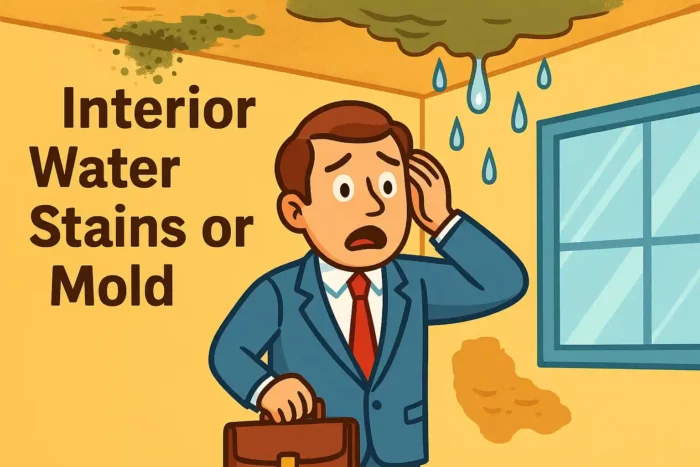As a business owner, your roof protects everything from your employees to your inventory. But unless you know what to look for, small issues can go unnoticed — leading to costly repairs or downtime later on. Whether you’re scheduling a routine inspection or preparing for seasonal maintenance, here’s a breakdown of what every business owner should look for during a commercial roof inspection.
1. Visible Signs of Damage
One of the first things to check for is any visible damage to your roofing surface. This includes:
- Cracks, splits, or punctures in the membrane
- Blisters or bubbles under the surface
- Exposed underlayment or insulation
- Curling or missing seams
Why It Matters: Even minor surface damage can allow water to seep into your building, leading to interior leaks and mold growth.
2. Drainage System Condition
Proper drainage is critical for flat or low-slope commercial roofs. Make sure your inspector checks:
- Clogged or slow-draining gutters and scuppers
- Debris buildup around drains
- Signs of ponding water (standing water after 48 hours)
- Rust or corrosion around drain covers or metal components
Pro Tip: Blocked drainage can shorten your roof’s lifespan by years. Keep these areas clean and free of debris year-round.
3. Flashing and Edge Details
Flashing is the material used to seal joints around chimneys, vents, skylights, and roof edges. A good inspection will check for:
- Loose or lifted flashing
- Cracked caulking or sealant
- Gaps between flashing and roofing materials
- Rust or deterioration on metal flashing
Important: Faulty flashing is one of the top causes of roof leaks — especially after storms.
4. Roof Penetrations and Equipment Seals
Most commercial roofs have HVAC systems, exhaust fans, skylights, or satellite dishes. These are known as roof penetrations, and they’re often the weakest spots on a roof.
Your inspector should examine:
- Seals and boots around mechanical units
- Mounting brackets and fasteners
- Leaks or staining around units
- Signs of vibration damage
Watch Out: Poor sealing around equipment is a common point of failure and should be resealed or replaced if worn.

5. Interior Water Stains or Mold
Sometimes the signs of roof damage are easier to see inside your building. During a thorough inspection, check:
- Ceiling tiles for water stains
- Walls for peeling paint or bubbling
- Musty odors or visible mold
- Wet insulation above drop ceilings
Quick Action: If you notice any of these signs, they may indicate a slow leak or insulation saturation.
6. Roof Age and Overall Condition
Even if your roof appears fine, its age plays a big role in maintenance planning. Your roofing contractor should provide:
- Estimated remaining lifespan
- Material-specific concerns (TPO, EPDM, metal, etc.)
- Recommendations for repairs or replacement
- Condition report with photos
Pro Tip: A professional roof inspection should always include documentation. This helps you track roof health over time and is useful for insurance or resale purposes.
Final Thoughts: Protect Your Investment with Smart Inspections
Your roof is one of your building’s most valuable assets — and one of the easiest to overlook. Regular inspections are the best way to catch issues early, extend your roof’s life, and avoid unexpected expenses.
Need a professional roof inspection? Contact CMP Roofing today and schedule a commercial roof checkup from our certified team. We’ll make sure your roof is in top shape — so you can focus on running your business.
Comments are closed here.